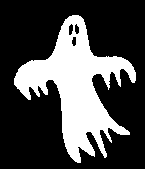

 http://mendel.berkeley.edu/~jchuang/Schekman/cgi-bin/Ghost/home.cgi (Chip Special: Spiele im Internet, 02/1996)
http://mendel.berkeley.edu/~jchuang/Schekman/cgi-bin/Ghost/home.cgi (Chip Special: Spiele im Internet, 02/1996)

GHOST: Home Page
Ghost is a two player word game.
Instructions below...
Please read the following before playing, or you will be confused:
Etiquette: VERY IMPORTANT
- You will be playing against another person. Please be considerate: don't leave him / her hanging on the line. Finish the game OR use the CONCEDE button, which will inform the other person that the game is over.
- Similarly, always use the QUIT button when you want to stop waiting for players. Otherwise, a game will be organized, but you won't be there to play, making other people angry and frustrated.
- Note: While you are waiting for your opponent to make a move, your browser will remain connected to the server.
You should see "Host contacted. Waiting for reply." on the bottom of your window.
Your opponent has 2 minutes to make his / her move before time runs out.
Ghost keeps the connection open so that if can inform you when it is your turn.
This is an example of Server Push.
- It is possible to open a NEW WINDOW on your browser so you can visit other Web sites while waiting for your opponent.
Just don't forget that you are playing Ghost, and that someone else may be waiting for you make a move.
So, if you open a new window, keep part of the Ghost window visible, so you can see when it is your turn.
Browser Requirement
Your browser MUST support Dynamic Document Updating, specifically Server Push and Client Pull.
To my knowledge, only Netscape 1.1 (and later versions) have this capacity.
You will not be able to play unless you have Netscape >1.1.
If you know of other browsers that do support Dynamic Document Updating, please let me know:
jchuang@mendel.berkeley.edu
Instructions
- This is a test version of Ghost. Please report any bugs in as much detail as possible, and leave a return address. Thanks. I hope you enjoy Ghost.
- During each turn, you receive a word fragment (the ghost fragment).
All you have to do is add a single letter to either the beginning OR end of the ghost fragment, and then pass the new fragment back to your opponent.
- You are not allowed to form a word! If you pass back a real word, you lose. (The computer checks your fragment against its dictionary.)
- However, you must be thinking of a real English word that contains the ghost fragment.
- The idea is to either try to stump your opponent with some bizarre letter combination, or to force your opponent to complete a word.
- Note: The dictionary only recognizes words with FIVE or more letters. This minimum may change, but the three letter minimum dictionary had a lot of weird words that would cause the computer to end a game since it thought someone had formed a real word. In the meantime, three and four letter words are legal, but you should try to use some self-restraint, or at least feel ashamed when you have to form such a word 8).
- Example Round:
- You have just been passed the ghost fragment XTRA.
- You cannot add an E to the beginning (forming EXTRA, which is a word).
- You can however, add a V to the end, with the word eXTRAVagant in mind.
- Of course, you can bluff you way out of any sticky situation.
But, be ready to be called on your bluff.
Your opponent can challenge your fragment.
If you are challenged, you will be asked for the word which contains the current ghost fragment.
If your word cannot be found in the dictionary, you lose.
If your word is found in the dictionary, you win the game.
- The dictionary, while very thorough, does not contain all known English words.
So, sometimes you will be handed down an unfair decision by the jury.
In this case, you can just deal with it, or you can submit an add / remove word form.
I don't think the dictionary recognizes many British spellings, so use the American version instead (for example, RECOGNIZE versus RECOGNISE).
Additional Information
This game was written in Perl.
I've used a slightly modified form of the ReadParse form processing subroutine from Steven Brenner's cgi-lib.pl. Thanks to Ann Corsi for the Ghost drawing.
Please send comments, questions, and bug reports to jchuang@mendel.berkeley.edu.
John Chuang,
10th Oct 1995
Last Modified: 20th Oct 1995


 http://mendel.berkeley.edu/~jchuang/Schekman/cgi-bin/Ghost/home.cgi (Chip Special: Spiele im Internet, 02/1996)
http://mendel.berkeley.edu/~jchuang/Schekman/cgi-bin/Ghost/home.cgi (Chip Special: Spiele im Internet, 02/1996)